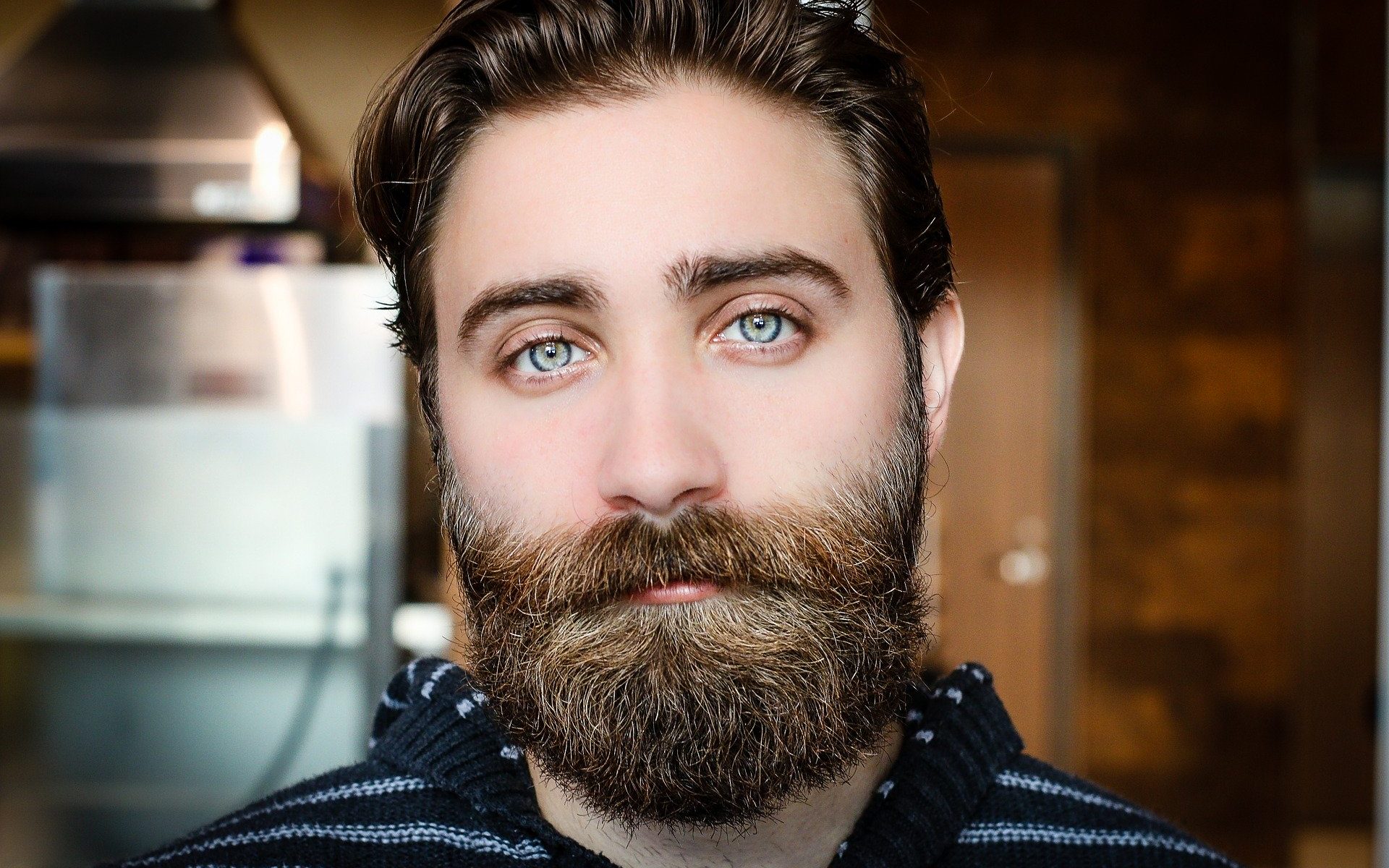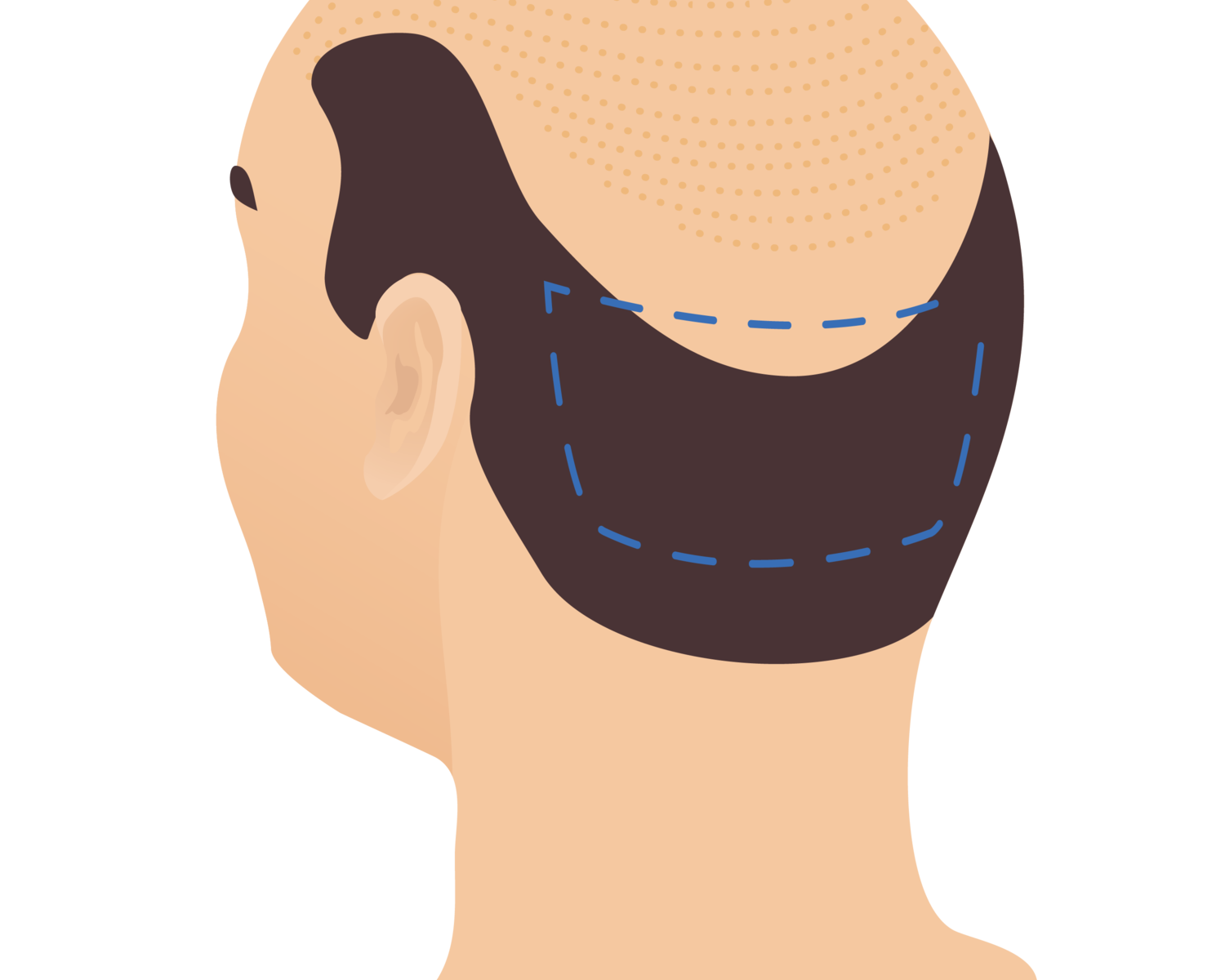
Pharmacist with special interest in hair loss and hair transplantation.
Read my book on hair transplants in Turkey on Amazon:
https://track.more-info.co.uk/amazon/authorprofile
Hair transplant education for beginners. Both hair transplants in Turkey and around the world
The success rate of a hair transplant depends on 6 crucial factors, which we will discuss in this article.
Interestingly, research shows that the survival rate of hair grafts is around 90%, but that doesn’t mean we can conclude hair transplants have a success rate of 90%!
It’s not that simple!
Some clients have high expectations of their hair transplants.
They might expect to get back the hairline they had at 18, which is usually impossible.
So success for these clients will look completely different than those clients who are happy to have SOME hair.
An experienced clinic will work with clients from the outset to gauge their expectations and manage those accordingly.
The type of hair plays a crucial role in the final look after a hair transplant.
Typically, curly afro-type hair achieves much better density than straight Caucasian-type hair. So a client with afro-type hair will usually achieve better overall thickness ; usually with fewer grafts.
On the other hands, straighter hair has the advantage that its easier to work with, i.e. harvest and transplant.

How much of your own hair do you have left?
This is usually one of the first things a surgeon assesses.
The more you have, the better.
One piece of research showed the average male client has around 10,000 donor grafts at the time they show up at the hair clinic. But this was research from the US looking at one clinic over a number of months – so take it with a grain of salt.

Hair loss in men is measured on the Norwood scale. The further along you are the more hair grafts you require and vice versa.

But that is not to say someone who is a Norwood 6 cannot achieve outstanding results – they absolutely can.
The success rate also depends on their hair type and artistry of the surgeon.
Some of you might be thinking, “well, i’ll have a transplant as soon as i am even a Norwood 2-3”.
You could, but be prepared to have multiple follow up procedures if your hair loss progresses.
Most ethical clinics would not do procedures on men under a certain age, usually 25, because their hair loss hasn’t stabilised.
With every hair transplant there is a risk of scarring. And minimising this plays a crucial role in the success of a procedure.
No patient wants to have lovely looking hairline but with a hideous visible scar at the back of the head!
The risk is less with certain skin types and with certain techniques.
The preferred hair transplant technique in most cases is FUE, or follicular unit extraction.
With this technique, hair is meticulously plucked by hand causing minimal to no scarring.
While the FUT or “strip” technique takes a strip of scalp (with the hair grafts) from one part of the head to another – leaving a significant scar.
Black skin types tend to be more prone to scarring. So the FUT technique isn’t usually recommended for them.

This is the big one!!
Hair transplantation isn’t just a procedure.
It’s an art.
A skilled surgeon can design a hairline that brings the best out of his client, while making every single available graft count.
The very best clinics can achieve incredible density and artistry with surprisingly few grafts.
Less skilled surgeons can sometimes over-harvest to compensate for their lack of artistry.
As a client, this where you really need to do your homework to find the very best surgeon for your specific case.

Pharmacist with special interest in hair loss and hair transplantation.
Read my book on hair transplants in Turkey on Amazon:
https://track.more-info.co.uk/amazon/authorprofile
Yes, black people can can have a successful hair transplant but with a few caveats.
Doing a hair transplant on black people has a few unique challenges which we will explore now.
Black people usually have hair that is more curly than Caucasian or other races. This means the technique used for black hair will be slightly different.
Let me explain a bit more.
A popular technique is the FUE technique (follicular unit extraction) where hair is plucked or harvested from one area of the scalp and transplanted onto another area.
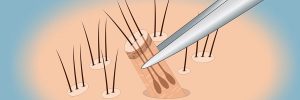
Given that black people’s hair is more curly at the base, this poses a Challenge for surgeons in harvesting the hair.
So some surgeons have developed special tools for this. And a few surgeons have built up specialised expertise in transplanting african-type hair.
Generally black skin is more prone to scarring than other skin types. So hair transplant techniques which can leave a scar are probably not recommended for people with black skin.
Techniques such as FUT strip an area of the scalp and transplant it onto another area, leaving a significant scar.

Most likely, this would not be recommended for people of African descent, unless the surgeon is convinced the risk of a scar is minimal.
A piece of good news for people with African type hair, is that they usually get excellent coverage even for a small number of grafts.
This simply means their final result usually looks a lot denser and thicker than other hair types.
Because their hair is curly it gives better coverage compared to to Caucasian type hair. So they can have relatively small number of grafts and Achieve a much better density.
Fue technique of hair transplantation can yield excellent results for black clients.
FUE stands for “follicular unit extraction” which involves extracting each follicular unit by hand.
The curly nature of black hair types makes this technique fairly challenging. It can also be more expensive than other techniques.
FUT stands for “follicular unit transplantation”, or the “strip” method.
This technique involves cutting an entire section of scalp and transferring it to the bald area.
This technique can yield even better results than FUE for black clients, but it can lead to scarring in some patients.
FUT is also substantially cheaper than FUE.
It is critical you choose a clinic that has experience with black hair types.
Black hair type is different than other hair types. It is curlier and coarser. So it does require specific skills from the clinic.
I have published a video on my recommended clinics for people with black hair types.
There are two opposing arguments in terms of the cost of hair transplants for black hair types.
Because clinics which specialise in black hair types are fewer in number, they may charge a higher price.
Also, black hair type tends to be trickier to work with, so surgeons may charge a higher premium.
On the positive side, if a black client goes for the FUT or “strip” method; the costs tend to be much lower.
Also, as most black hair types achieve excellent density with fewer grafts; their costs may be lower.
Hair transplants can be successfully done on mixed race people ( i.e. Caucasian & black mix). However, it is highly recommended those people get a face-to-face consultation to assess their suitability and hair type first.

Some mixed race people have a hair type closer to Caucasian hair, and others have a hair type closer to African-type hair.
Which one are you?
If the former, then they have a wide choice of excellent surgeons to choose from. But if the latter, then they have to choose clinics which specialise in african-type hair and do their research very carefully.

Pharmacist with special interest in hair loss and hair transplantation.
Read my book on hair transplants in Turkey on Amazon:
https://track.more-info.co.uk/amazon/authorprofile
Turkey is now the leading country in the world for hair transplants.

As you can see from the chart above, Turkey is projected to do more hair transplant procedures than the rest of Europe combined!
Among this huge volume of work will be some shoddy clinics, and some exceptional clinics.
I believe with careful research, you can find clinics in Turkey, which are as good, if not better, than what you find in other leading hair transplant destinations.
There is probably more variability in quality in Turkey given the massive volume, but the top quality clinics are still there.
So the key here is research, research, research.
This ties in closely to the previous section.
The better your research, the better your chances of ending up with a quality clinic.
And off course, good clinics have good safety records.
Turkey has a good safety record in general in terms of the medical field.
It is well regulated and has become a major health tourism destination over the last 20 years.
When things go wrong, it is because people have rushed things, went for the cheapest option, or done little research, and invariably this increases the risk of ending up in the hair transplant black market.
Getting to Turkey is easy if you live within Europe or even the eastern side of North America.
The flights to Turkey from the UK for example is a little over 3 hours.
Flying New York to Istanbul is 9 hours, which is less than flying from New York to Hawaii!
On arrival VISA requirements are relaxed for most countries.
If you are from the UK or US/Canada ; you can visit Turkey for up to 90 days without a VISA.
Turkey is a very well developed country.
It has a good transport network. And most of the time, your hair transplant clinic can arrange your transfers.
The hotels are exceptional too, with many 4 and 5 star hotels even in the smaller cities.

This where i think Turkey has big edge on the competition.
It is significantly cheaper than all the other well established hair transplant destinations (Europe/North America).
It is cheaper in all aspects, from the procedure itself, to the travel and hotels.
This is partly due to the relatively weak Turkish currency, compared to the Euro/Dollar/Sterling.
In summary, you get a lot more bang for your buck

Turkey consistently comes up cheaper than other major destinations for the hair transplant procedure itself.
Often, the same procedure in Turkey is as much as 50% cheaper compared to the UK or north America for example.
Why?
well, life is generally more expensive in those countries. And secondly, surgeons charge more for their time as a result.
You can read more on the cost of hair transplants in Turkey with our detailed article here:
Real Cost of Hair Transplants in Turkey in 2020
Turkey has developed clever hair transplant “packages” to make the whole procedure as convenient for clients.
And off course, to make more money!
I will break down this model in the rest of the article.
Usually most of the following are included in a package?
Usually no, but it’s not that simple.
Some elements of the packages are more or less “fixed” cost.
The cost of the procedure itself is likely fixed because if you agreed to see a particular clinic you have to accept the price they charge for their service.
If you are an experienced traveller, and you know Turkey well, you can make good savings in how you book your flights, hotels and transfers.
But if you are not an experienced traveller it may be better to let the clinic know what your budget is for travelling part of your trip and they can try to get the best bang for your buck.
After all, they want your business and its in their interest you make it there!
Plus they probably know the ins and outs of their own country better than you do. They may even have deals with certain hotels and transfer companies.

Most do. Not all.
You will find the “big” clinics, that have been going for years, usually have a representative in charge of customer relations.
This is the person in charge of getting you from your front door to the surgeon’s office.
If you decide you want to go with a package then this is the person you need to liaise with.
If you can’t be bothered sorting everything else out yourself then going with a package is ideal for you.
All you have to worry about is packing and making it to an airport.
Easy!
You leave the headache of flights, hotels and transfers to someone else!
Also, if you are not an experienced traveller you minimise the risk of making a mistake; by leaving the fine details to the professionals.
Well, the main disadvantage is cost.
Packages will almost always be more expensive than doing it yourself.
Also you may not have say in the type of hotel you stay in for example. A package by nature is kind of fixed.

I think if you have little experience as a traveller, and particularly to Turkey, you are better off with a package.
Yes, you will probably pay a little extra but you will have peace of mind that everything is sorted; and you can concentrate on getting ready for your day with the surgeon.
But if you are a frequent traveller, and can book everything with your eyes closed, then you will make a saving by doing it yourself.
There are some agencies affiliated with some clinics, who promise to book the hotels and transfers for you.
Personally i wouldn’t use them.
I would only use the in-house team at the clinic to provide my package directly.
The reason is simple.
The clinic have the biggest interest in making sure you get to Turkey in comfort.
So they will most likely go that extra mile to make sure your journey is as smooth as possible.
I think Turkey is an excellent hair transplant destination provided you do your homework.
If your priority is to get the cheapest hair transplant possible, you are likely heading for a disaster.
But if you do your research properly, then Turkey is as good as any place in the world for a hair transplant.

Pharmacist with special interest in hair loss and hair transplantation.
Read my book on hair transplants in Turkey on Amazon:
https://track.more-info.co.uk/amazon/authorprofile
Many men desire to have a full beard but either through genetics, conditions such as Alopecia Areata, or hormonal deficiencies, they are unable to grow such a beard.
Often, their beards may be patchy and not as full as they would like. This is where beard transplants can be very helpful.
In this article, i will give you all the information a beginner considering a beard transplant may need.
In general, all beard transplants have the following characteristics and features:
Beard transplants are done in the same way as hair transplants, and there are two main methods of doing this:
Pros and cons of each technique
The FUE method is typically the most common method and involves the surgeon harvesting individual follicles from the donor area.
These individual follicles are then transplanted to the beard area follicle by follicle.
The FUE method is time-consuming, but it leaves less scar tissue at the donor site and it is faster to heal.
This also means that patients can return to work and their normal lifestyle faster.
Even though the follicles are harvested from a larger donor area, the smaller scars are harder for anyone else to see.
During the FUT method, the surgeon will harvest a small strip of skin from the donor site that contains multiple hair follicles.
This tiny strip of skin is then transplanted to the target site.
Typically, this method leaves longer scars at the donor site.
Though the FUT method is not as common, it can be quicker and easier to achieve a full beard because more hair follicles are transplanted at one time.
Of course, the more significant scarring can be a problem for some people and it can take longer to heal.

Even though beard transplants have come a long way in recent years, there are still some risks that every potential patient must consider:
As outlined previously, there will be scarring involved during a beard transplant procedure (likely).
The FUE method leaves tiny circular scars that usually turn white over time, whereas the FUT method leaves long thin scars that tend to be more visible.
Having said that, the scarring is also usually hidden by other hair, so it may only be an issue for certain people.
Because hair follicles are harvested from a donor site, such as the scalp, under the chin, or the chest, there will be some hair loss at the site.
The FUE method only extracts every fifth hair, so the hair loss may not be as noticeable.
Skilled and experienced surgeons will implant the hair follicles at different angles and take their time doing so.
This process achieves a more natural looking beard.
The problem is that some surgeons may not do this or may not implant at an angle that is consistent with a natural looking beard.
The result is beard growth that looks too linear and unnatural.
Even though the FUE method is less painful overall as a transplant method, redness, swelling, sensitivity, and some bruising are common features of both FUE and FUT methods.
Beard transplants are generally quite expensive, so it’s important for a person to be absolutely sure that they want to undergo the procedure and that they understand the possible risks and side effects.
Some people are shocked that their new beard falls out in around three weeks, but this is perfectly normal. The transplanted hair follicles will grow new hair again quite quickly.
Cost of a Beard Implant (in Europe, Turkey, the United States, and India)
Here are the costs of having a beard transplant in the United States, Turkey, India, and Europe:

Clinics That Do Beard Implants in Turkey
The following clinics offer beard transplants in Turkey:
Growth Timeline
In most cases, the transplanted hair will fall out not long after the transplant procedure, but new hair growth will take place after this, in about three or four months after the procedure.
Hair will continue to grow slowly and after six to seven months, there should be significant growth.
In 12 months, a patient should expect to experience full-beard growth.
Let’s analyse a before and after picture of a beard transplant example
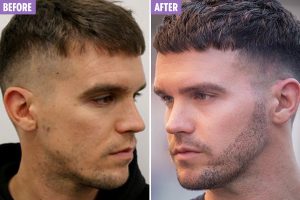
Before:
Although it’s hard to tell as the client is shaved. It is obvious by how smooth the skin is that his beard is very thin, especially at the side of the face. He has a small amount of stubble on the chin.
After:
The client has a nice strip of beard in the “5 o’clock” shadow style. It runs very nicely from his sideburns down.
The moustache has probably been thickened as well.
A very elegant result in my opinion.
Aftercare
It’s important to take good care of both the transplant area and the donor site after surgery by following these steps:

Pharmacist with special interest in hair loss and hair transplantation.
Read my book on hair transplants in Turkey on Amazon:
https://track.more-info.co.uk/amazon/authorprofile

This is a 43 year old gentleman who had 4000 grafts done in Turkey, 2015.
He had fairly advanced baldness to start with. As you can see, his entire front to mid-scalp was almost completely bald. But in his favour, he does have an excellent head shape for the “bald and proud” shaved look.
The final result is sensational.
The thickness is what strikes you straight away. From where he started it’s remarkable. To achieve this thickness, you need a lot of grafts and a skilled surgeon to pack them in, and it appears this patient had both.
Well, he definitely had the volume of grafts because 4000 is a relatively high number.
I also love the hair line. It wasn’t brought down too much which would’ve looked rather silly on a mature man like him. The artistry that went into the hairline is terrific.
We don’t really know the technique deployed in his procedure, but it’s probably FUE which is the most widely used for clients with his hair type.
Overall, this chap will be delighted with his hair transplant. We don’t know what his crown, and donor areas look like but the front looks excellent.

Our second case is a younger man of 27. His hair loss was milder than the first client, but he still had over 5000 grafts. A rather aggressive treatment but all worth it, as his final result is stunning.
The hairline is completely filled in. The hair is long and luscious. He is well past the shedding phase by the looks of it.
The design of the hairline is excellent. The clinic resisted the temptation to bring it down too much which would’ve probably altered his looks a bit too much, and made his hair transplant rather obvious.
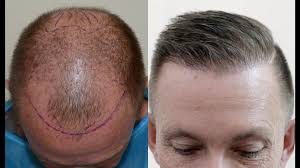
Our third candidate probably has the most extensive balding. He must be at least a Norwood 4 or 5. and he wasn’t thinning, he was actually almost completely bald.
Looking at his results, the first thing that strikes us Is the incredible thickness. Sometimes when severely balding people get hair transplants, the final result is a wispy thin look; where you can still see the person’s scalp in areas.
With this gentleman, there are no such issues. his hair is thick as grass with no gaps whatsoever. I’m guessing he must have had at least 1 Mega session or two smaller sessions to achieve this incredible level of thickness.
He may also have been is slightly lucky, in that he had thick hair type which gives better looking density.
Usually people of African descent, with their curly hair type have this, but you still find people of other races with naturally thicker hair coverage.
I also love the artistry of the hairline. Firstly the hairline is quite high which I think is entirely appropriate and natural.
The hairline actually reminds me of a 1950s movie Star!
I think this client would look superb with a hint of Brylcream!
As I have always said; hair transplantation is not just a procedure – it is an art form.
I hope these case studies have proved useful and shown you the positive side of hair transplants.
Disclaimer:
The success of these hair transplants will have no impact on your chances of a successful hair transplant.
Allthough all effort has been taken to check the facts of each of the featured cases, we were not able to contact the original clients directly to verify these accounts.

Pharmacist with special interest in hair loss and hair transplantation.
Read my book on hair transplants in Turkey on Amazon:
https://track.more-info.co.uk/amazon/authorprofile




